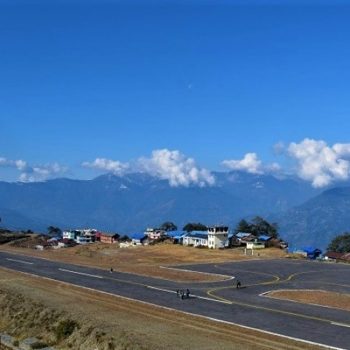Lack of liquidity begins in banks as impact of pandemic subsides

KATHMANDU: As the effects of the COVID pandemic have diminished, economic activity has increased. The growing economic activity has had a direct impact on banks and financial institutions. Demand for loans from banks and financial institutions for investment is increasing.
Banks and financial institutions are likely to face liquidity problems as deposits are less than demand. As the demand for loans increases, the interest rate on deposits increases and naturally the interest rate on loans also increases. Experts say that this will affect the price of goods and services and will have a direct impact on the daily life of consumers.
The Nepal Rastra Bank (NRB) had increased the CCD ratio (ratio of minimum capital and deposit to loan) from 80 per cent to 85 per cent, saying more liquidity was needed in the crisis-ridden economy. According to the latest central bank data, the CCD ratio is 75.69 per cent.
With the rapid expansion of credit and the weakening of deposit mobilization, the same chronic disease of Nepal’s economy and banking sector is likely to start in the near future. According to experts, the recent rise in imports has led to the accumulation of revenue from customs in the government coffers and the tendency to not spend the government’s budget, which has led to a liquidity crisis in the market.
Bankers say that liquidity problems will not be seen from next April if the demand for loans increases at the same pace and the collection of deposits does not improve. According to him, when the deposit collection is less than the loan, the interest rate on the deposit will go up and when the interest rate on the deposit goes up, the base rate and cost of funds of the banks will also go up.
Despite the increasing demand for loans, there is not much pressure on liquidity and the problem may arise from April, Nepal Bankers Association President Bhuvan Dahal told Nepal Press.
“If you look at the data from September, economic activity has increased. I think this will naturally increase the demand for credit as well as the rates of economic growth. In the past, banks had monthly liquidity of Rs 104 billion, which has risen to around Rs 100 billion, Dahal said. At present, the interest rate on deposits is close to 5 per cent and the interest rate on loans is around 9 per cent. As of January, Rs 400 billion has been collected and Rs 300 billion has been invested in loans. We also feel that liquidity problems may arise from April,” Dahal said.
Laxmi Prapanna Niraula, Chairperson of Agriculture Development Bank, says that the demand for investable money has started to increase as the economy is moving with the confidence of investors due to the readiness shown by the government to bring vaccine subsidy to Nepal from India and purchase more vaccines.
Nepal Rastra Bank, on the other hand, has said that the liquidity problem has already started. Rastra Bank Spokesperson Dr. Gunakar Bhatta says that the current liquidity in banks and financial institutions has come through refinancing. He says, ‘Two months ago, there was around Rs. 200 billion in liquidity in Nepal, but now that is not the case. At present, banks have around Rs 100 billion in liquidity. Out of that Rs 100 billion, Rs 83 billion is refinancing sent by the central bank. The central bank can use tools such as manipulating interest rate corridors, raising refinancing limits, lowering CCD ratios, reducing CRR and SLR ratios.
Spokesperson Bhatta’s analysis is that the liquidity problem has arisen due to the neglect of ordinary savers and the inability to prioritize the credit investment sector. According to him, banks and financial institutions have disbursed loans at an average of Rs 330 billion in the first six months of this year as compared to Rs 270 billion in the first six months of last year.
“Large investments are needed to revive Nepal’s economy, which requires importing everything it needs. According to the customs data, Rs 800 billion has been imported in January. Remittances, the only means of injecting liquidity, also was at around Rs 900 billion last year. As imports increase, where do they get the resources they need in the future? In order to increase credit and protect depositors, they kept the interest rate on deposits and the interest rate on ordinary savings very low. As a result, the depositors are not satisfied with the bank.”
He says that with the introduction of the Covid vaccine, the morale of investors has increased, the investment sector has widened and deposit collection has been slower than the demand for loans. “The central bank should intervene in interest rates to regulate them and use monetary policy instruments,” he said. According to economist Anil Raj Bhattarai, even though Nepal’s economy is not recovering from the ‘V’ shape, it is natural to see signs of increasing demand for investment loans as the economy moves closer to recovery.
“Nepal’s economy used to have a small tap open from a full water tank six months ago, but now that the tap has been fully opened, it seems natural that the water has overflowed. As the economy stabilizes, there is a demand for more investment. The structure of Nepal’s economy has not changed. The import policy based on imports and remittances based on the old remittances of the old economy has been maintained,” Bhattarai told Nepal Press. No work has been done to create employment. Therefore, as more imports are collected, more revenue is collected and the government cannot spend. Demand for credit for imports continues to rise, but employment and GDP are growing, which reduces deposit mobilization and creates liquidity problems.
At present, Nepal’s banks and financial institutions are prioritizing loans in short-term profitable sectors.
Banks have invested more than Rs 30 billion in the stock market compared to last year and have reduced interest rates on ordinary deposits.















